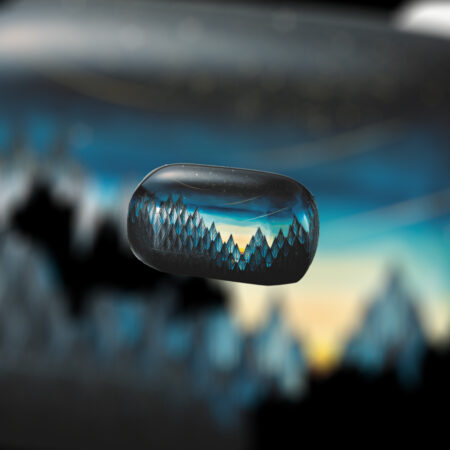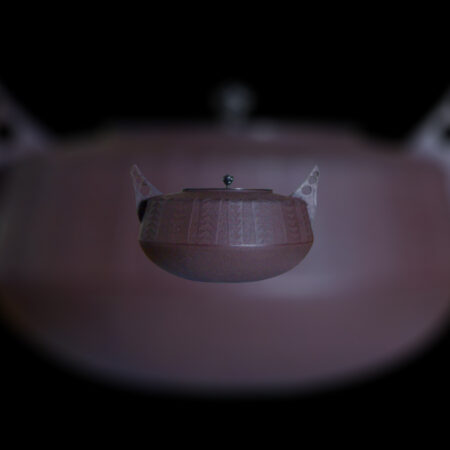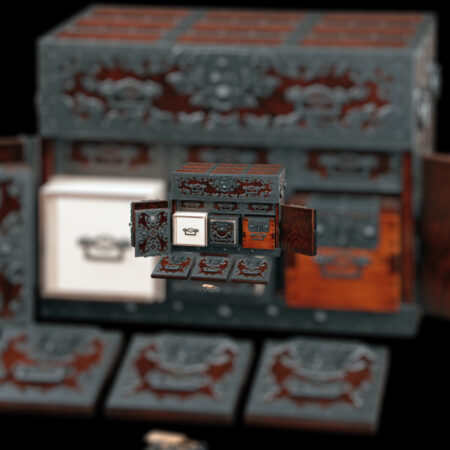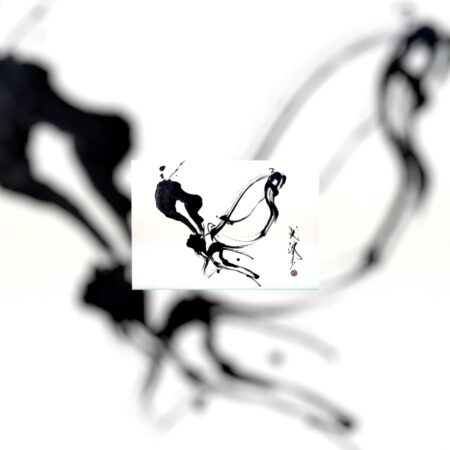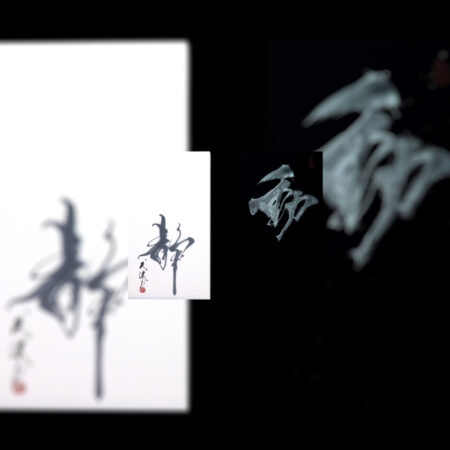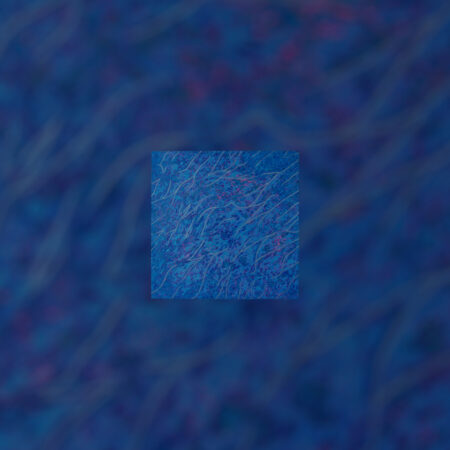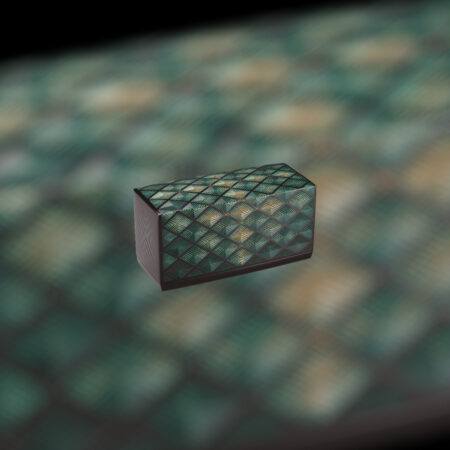This masterpiece is the perfect fusion of painting and writing with the use of a soft brush, which took two years to complete since the first stroke of the butterfly. Consolidation of the theme and overall design are the most time-consuming steps. The work is packed with thoughts and techniques- it looks like a picture of a butterfly, but it is, at the same time, the kanji character" cho (butterfly)". The soft image of the butterfly, its free movement, along with its fluttering wings were
presented through the use of silver paint. "Calligraphy” is an oriental form of modeling expressing the beauty of hand letters and the patterns of lives in jet black, which can be interpreted as the rule of nature. The brush is full of ink at first, the ink then gradually runs out, and more ink has to be added. The process then goes on and on.
Art
Expressing the suppleness and freedom of movement as butterflies flutter.

Artist
The Path of Calligraphy: Journey and Innovation
Taijun Nagayama
Started taking calligraphy lessons at the age of 4. When he turned 22, he received the Certificate of Master of Calligraphy and was given his art name, Taijun. He trained under calligrapher Kansho Miyashita and became fully active as a professional calligrapher. While adhering to an authentic style of Japanese calligraphy that respects tradition, he values adding new sensibilities to the solid foundation of Japanese calligraphy that has been established over centuries. In this way, he has been creating innovative and original works. Nagayama continues to express the inherent beauty of the Japanese people through the medium of calligraphy.

Art Style
Weaving the Essence with Brushwork
Shodo
He writes the character “dragon” like a dragon, and the character “butterfly” like a butterfly.
This is because Taijun Nagayama places great importance on writing characters that cut to the essence of all things, like the characteristics of a person or a thing. Listening well, feeling deeply, and using his whole body, he expresses the characters with a strong passion. Nagayama says that his greatest joy is when his works give people the opportunity to confront themselves, leading to opening up their lives. Valuing each encounter more than anything else, he continues to create calligraphy works that are unique to a certain moment in a certain relationship, both in terms of stillness and movement. He hopes to create the next generation calligraphy by uncompromisingly pursuing the code and, at the same time, how to break it, while valuing adding new sensibilities to the solid foundation of Japanese calligraphy that has been established over centuries. Taking it one step ahead, he is creating works to further communicate and spread the culture of calligraphy, the pride of Japan, throughout the world.

Roots
The Origins of Japanese Calligraphy Art
The Eastern style calligraphy is an oriental formative art that attempts to express the beauty of characters through the act of writing. It was introduced to Japan from China in ancient times. When Buddhism was introduced to Japan around the 6th and 7th century, calligraphy spread in the country as many people began copying the Buddhist sutras. Later on, calligraphy took a unique path in Japan with the integration of Chinese characters (kanji) and Japanese characters. Among the excellent calligraphers called noshoka, Emperor Saga, Kukai, and Tachibana no Hayanari are particularly famous, being referred to as sanpitsu (literally translated as “the three brushes”) since the end of 8th century. The three other highly recognized noshoka are Ono no Michigaze, Fujiwara no Sukemasa, and Fujiwara no Yukinari, who are referred to as sanseki (literally translated as “the three brush traces”). In this way, the Japanese calligraphy was established as a form of art.




